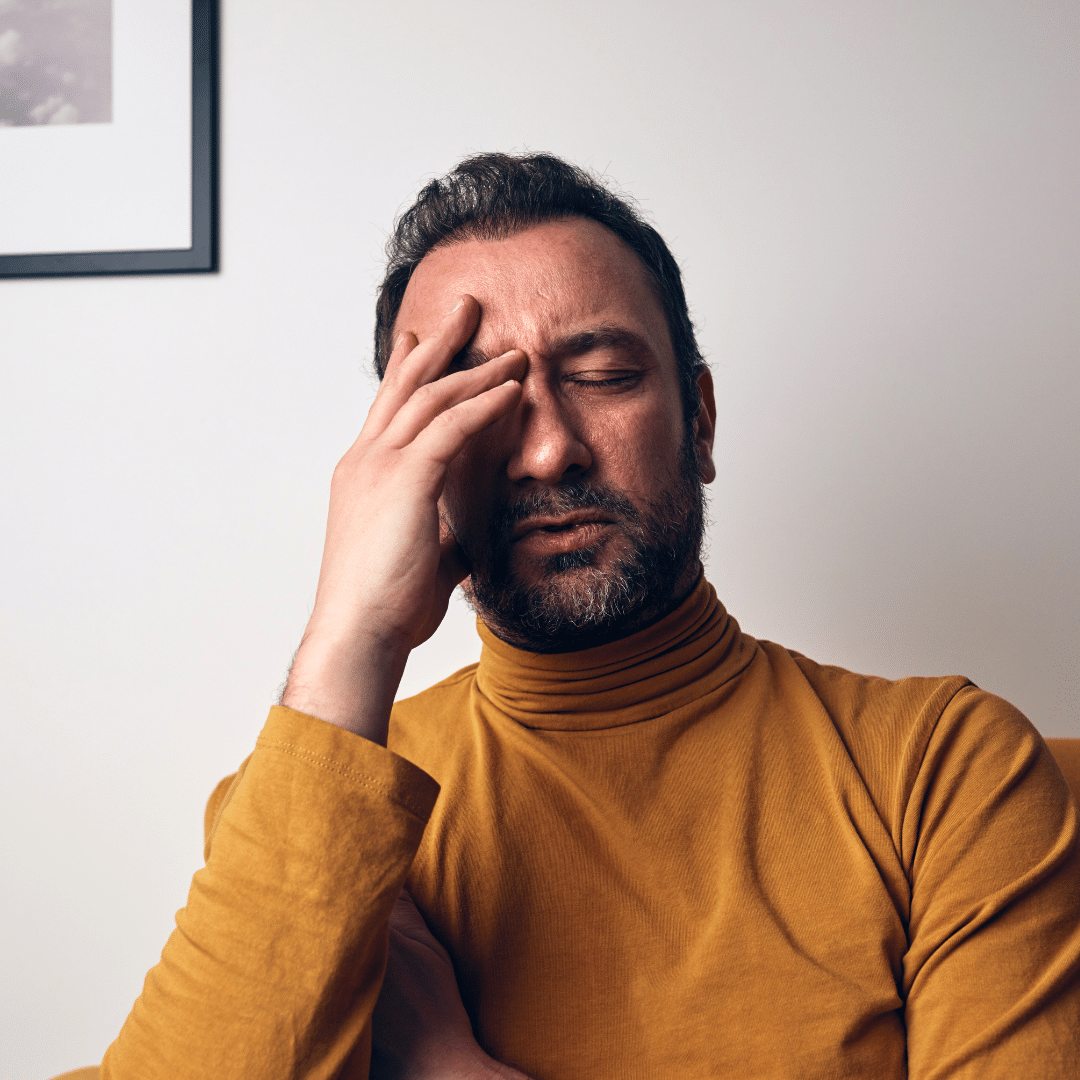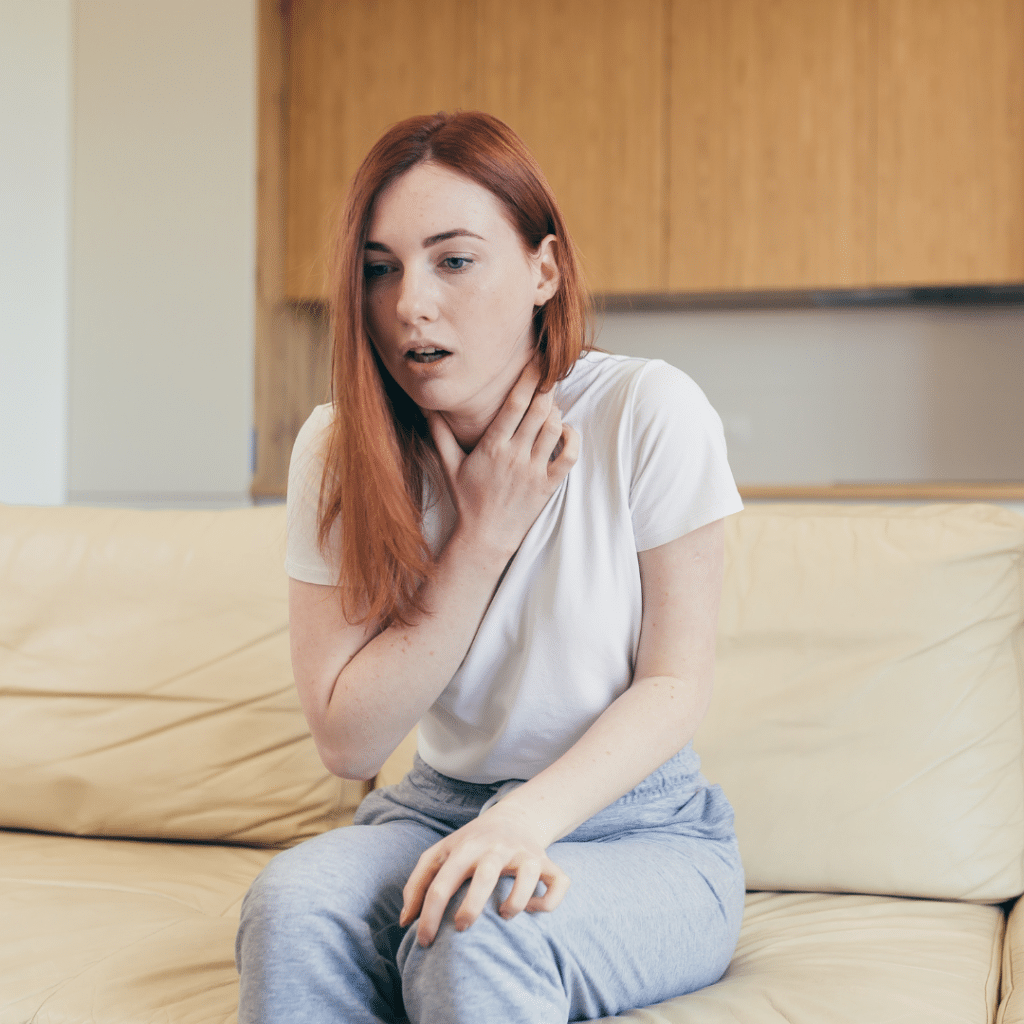Panic Attack vs. Anxiety Attack: Understanding the Symptoms and How to Cope
Maddison Henley PA-C

Panic attacks and anxiety attacks are often confused, but they are distinct experiences with unique symptoms and implications. While they share some similarities, these two experiences can be different. Knowing what sets them apart can help you manage them better, whether it’s for yourself or someone you care about.
Panic Attacks vs. Anxiety Attacks: What’s the Difference?
Although the terms panic attack and anxiety attack are frequently used interchangeably, they are not quite the same. A panic attack is a medical term, classified by a sudden, intense burst of fear or discomfort that reaches a peak within minutes, often accompanied by physical symptoms like heart palpitations, sweating, and shortness of breath. Panic attacks can happen without warning and are typically intense but short-lived.
On the other hand, an anxiety attack is usually recognized as more gradual and often linked to a specific stressor or situation. Anxiety attacks build over time and are characterized by feelings of worry, fear, and unease, often lingering for extended periods. While both can be distressing, panic attacks are generally more intense and abrupt, whereas anxiety attacks are prolonged and may feel less severe.

Symptoms of Panic and Anxiety Attacks
Understanding the symptoms is key to telling the difference between a panic attack and an anxiety attack. During a panic attack, you might experience a racing heart, where it feels like your heart is trying to leap out of your chest. You could break out in a cold sweat or feel suddenly chilly, and a tight, squeezing sensation in your chest might arise, which can be genuinely frightening. Shortness of breath often accompanies panic attacks, making it feel as though you can’t catch your breath, which only intensifies the panic. Nausea or dizziness is also common, leaving you feeling sick to your stomach or lightheaded. One of the most distressing symptoms is the overwhelming fear of losing control, creating a sense that something terrible is about to happen.

In contrast, anxiety attacks are characterized by a gradual buildup of symptoms, starting with restlessness, where you feel like you just can’t sit still or relax. Irritability may set in, causing little things to get on your nerves more than usual. Despite your mind racing with thoughts, your body might feel completely wiped out, leading to fatigue. It becomes challenging to concentrate on anything when your mind is stuck in worry mode, contributing to trouble focusing. Anxiety often interferes with sleep, making it hard to fall asleep or stay asleep, and this lack of rest can exacerbate the situation. Finally, anxiety can manifest physically as muscle tension, especially in areas like your neck and shoulders, where the stress often accumulates.
How to Handle an Anxiety Attack
Anxiety attacks can be overwhelming, but there are ways to bring yourself back to a calmer state. Here are five strategies to help you manage the next time an anxiety attack occurs:
- Breathe deeply: Try focusing on your breath. Take slow, deep breaths in through your nose, hold for a few seconds, and then exhale slowly through your mouth. It might sound simple, but it really helps.
- Ground yourself: Use the 5-4-3-2-1 technique to stay present. Notice five things you can see, four things you can touch, three things you can hear, two things you can smell, and one thing you can taste. It helps to shift your focus away from anxiety.
- Positive self-talk: Remind yourself that you’re safe and that this feeling will pass. Sometimes, just hearing yourself say it can make a difference.
- Move around: Get up and take a quick walk, even if it’s just around the room. Moving can help release some of that anxious energy.
- Practice mindfulness: Try to focus on the present moment without judgment. Mindfulness exercises can help you stay grounded and reduce anxiety’s grip.
How to Stop a Panic Attack
Panic attacks can be intense and frightening, but there are techniques you can use to regain control. Here are five strategies to help you quickly manage a panic attack when it strikes:
- Breath control: Breathing into a small paper bag can help regulate your breathing and prevent hyperventilation, though this is more of a last-resort tactic.
- Repeat a calming phrase: Find a short, soothing phrase that you can repeat to yourself, like “I’m okay” or “This will pass.” Repeating it can help you stay calm.
- Splash cold water: Splashing cold water on your face can jolt your system and sometimes stop a panic attack in its tracks.
- Count backwards: Distract your mind by counting down from 100 in threes. It’s just tricky enough to keep your brain busy and shift your focus.
- Progressive muscle relaxation: Start at your toes and work your way up, tensing and then slowly relaxing each muscle group. It’s a great way to release the tension that builds up during a panic attack.

Final Thoughts
Panic attacks and anxiety attacks are tough to deal with, but understanding the differences between them can make a big difference in how you manage them. Remember, panic attacks are sudden and intense, while anxiety attacks build gradually and last longer. Whether you’re dealing with one or the other, there are strategies that can help. And if these experiences are interfering with your daily life, don’t hesitate to reach out to our team for support—professional help can make a world of difference.
Responsibly edited by AI
Other Blog Posts in
Animo Sano Psychiatry is open for patients in North Carolina, Georgia and Tennessee. If you’d like to schedule an appointment, please contact us.
Get Access to Behavioral Health Care
Let’s take your first step towards. Press the button to get started. We’ll be back to you as soon as possible.ecovery, together.




